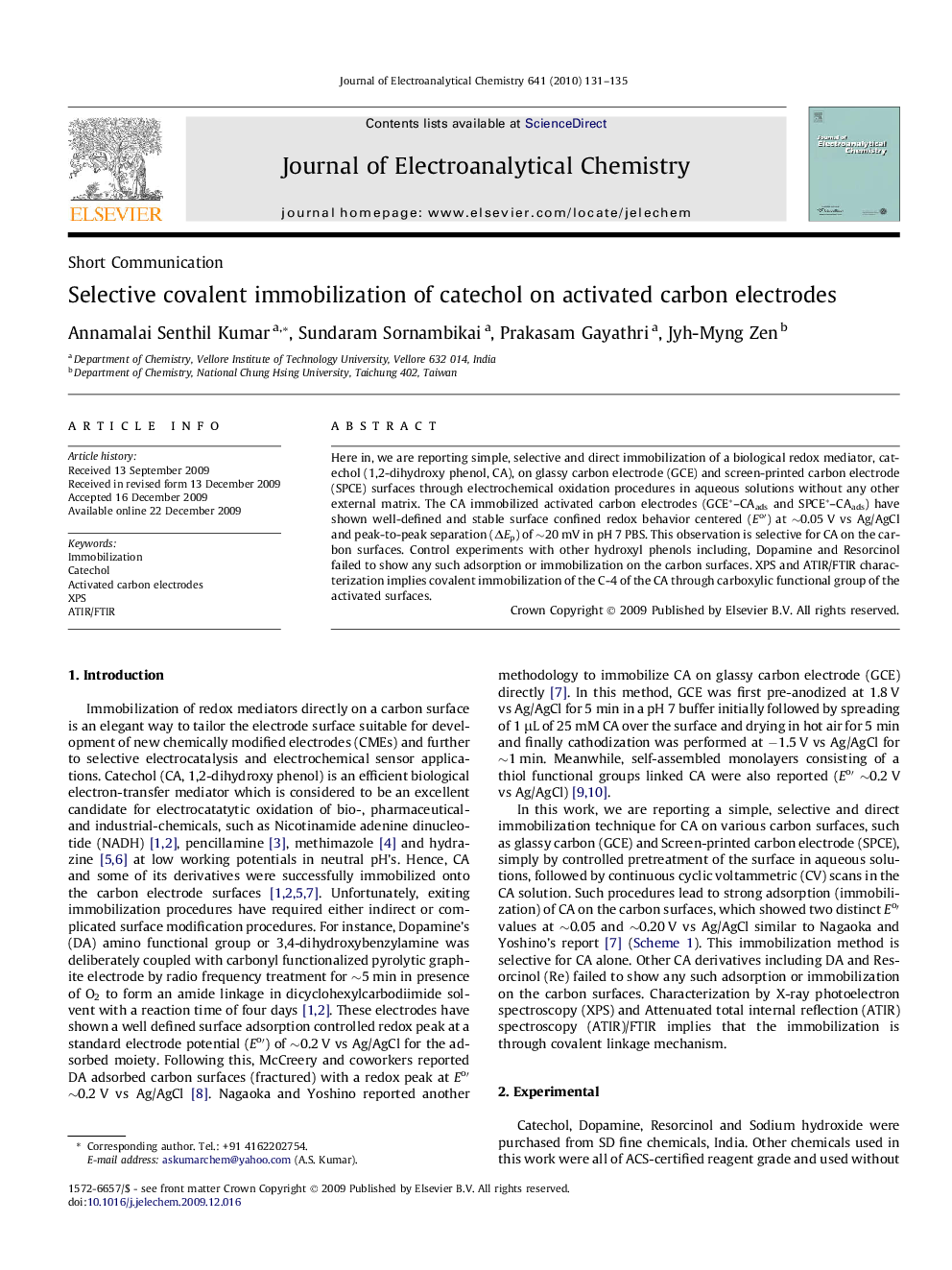| Article ID | Journal | Published Year | Pages | File Type |
|---|---|---|---|---|
| 220087 | Journal of Electroanalytical Chemistry | 2010 | 5 Pages |
Here in, we are reporting simple, selective and direct immobilization of a biological redox mediator, catechol (1,2-dihydroxy phenol, CA), on glassy carbon electrode (GCE) and screen-printed carbon electrode (SPCE) surfaces through electrochemical oxidation procedures in aqueous solutions without any other external matrix. The CA immobilized activated carbon electrodes (GCE*–CAads and SPCE*–CAads) have shown well-defined and stable surface confined redox behavior centered (Eo′) at ∼0.05 V vs Ag/AgCl and peak-to-peak separation (ΔEp) of ∼20 mV in pH 7 PBS. This observation is selective for CA on the carbon surfaces. Control experiments with other hydroxyl phenols including, Dopamine and Resorcinol failed to show any such adsorption or immobilization on the carbon surfaces. XPS and ATIR/FTIR characterization implies covalent immobilization of the C-4 of the CA through carboxylic functional group of the activated surfaces.
